What Is Carbon Sequestration and How Can We Use Agricultural Soils For This Purpose?
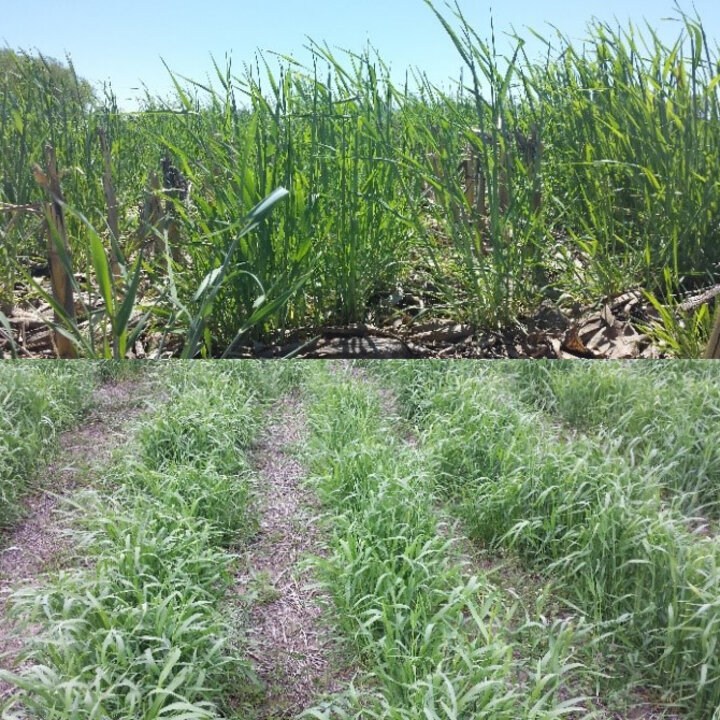
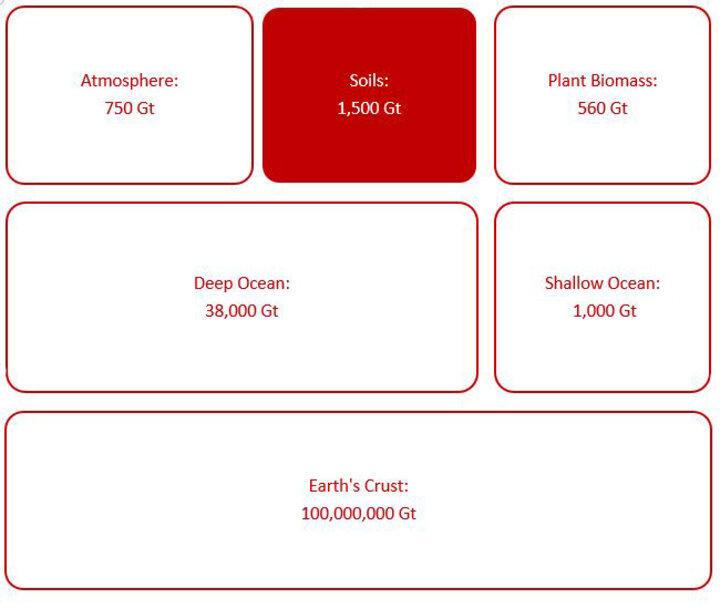
Intensively managed agricultural soils have lost 50% to 70% of their pre-cultivation carbon (Lal, 2007; Zomer et al., 2017).
This loss is partly responsible for the increased concentration of CO2 in the atmosphere. Management practices that capture the atmospheric CO2 and enhance carbon (C) sequestration in the soil are needed. Carbon sequestration refers to the transfer of carbon from the atmosphere to another long-term carbon reservoir. Soils are the largest terrestrial reservoir (Figure 2) and may provide the best way to remove carbon from the atmosphere.
Indeed, agricultural soils are the largest terrestrial carbon reservoir, and therefore represent a large potential sink to store carbon (Zomer et al., 2017).
The difference between the maximum amount of carbon that soils could naturally contain and the amount they actually contain is referred to as the soil saturation deficit (Feng et al., 2011). The larger the deficit, the higher the potential for carbon storage. North America has the highest potential of any continent for soil carbon storage at 0.17 to 0.35 gigatons (Gt) per year, and the United States has the highest potential of any country on Earth (Zomer et al., 2017)
How Do Cover Crops Sequester Carbon?
The chief method of carbon transfer to the soil is via photosynthesis and subsequent storage in plant root tissues, which decompose into soil organic matter (Kell, 2011). Because plants pull in CO2 from the atmosphere and store it in their biomass, plant residue that decomposes on fields contributes to soil carbon (Figure 3).
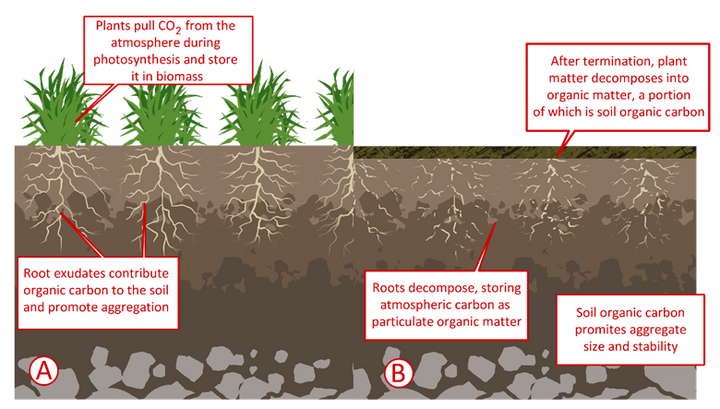
After carbon enters the soil as organic matter, several factors determine how long it remains there. Good soil aggregation leads to the physical protection of soil organic carbon (SOC) within aggregates (Amado et al., 2006) by preventing the oxidation of SOC into CO2 through microbial activity. This oxidation of SOC to CO2 occurs when microbes use carbon to build their own biomass. Adding organic matter through residues moderates soil temperature, which reduces the rate of carbon loss (Melillo, 2017).
Benefits of Increased Soil Carbon
Restoring lost soil carbon can have many benefits, not only for the environment at large but also for the producer’s bottom line. Soil carbon accumulation promotes aggregation of soil particles, soil water retention, microbial activity, nutrient cycling, and other key soil processes, enhancing overall soil fertility and productivity.
Potential of Using Cover Crops for Carbon Sequestration
There is general agreement that cover crops can sequester carbon, but the magnitude of their potential impact is debated (Zomer et al., 2017). The amount of carbon sequestered by cover crops can vary with soil type, management, elevation, and climate (Poeplau and Don, 2014), with colder climates most suited to long-term carbon storage. Previous studies estimate that the rate at which cover crops can sequester carbon in agricultural soils is 0.22 tons/acre/year (Ruis and Blanco-Canqui, 2017).
Our Findings from Nebraska
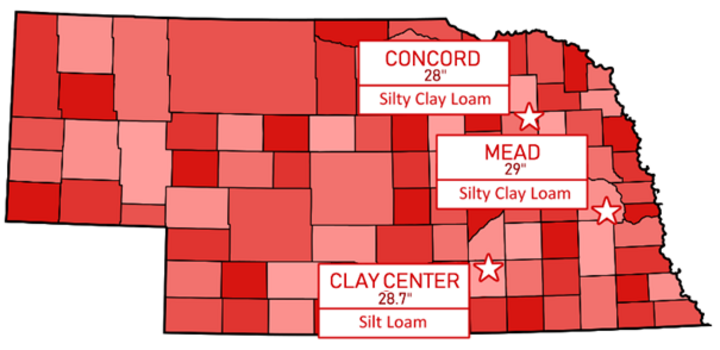
We conducted a four-year study from 2014 to 2018 at three sites in Nebraska (Figure 4) to determine how cover crop planting date and cover crop type could affect SOC storage, particulate organic matter concentration, and soil aggregation in continuous corn and corn-soybean rotations.
The cover crop planting date treatments were pre-harvest broadcast seeding (about a month before harvest) and post-harvest drilling. The treatments studied were: no cover crop, cereal rye, and a mix of cereal rye, winter pea, hairy vetch, and radish.
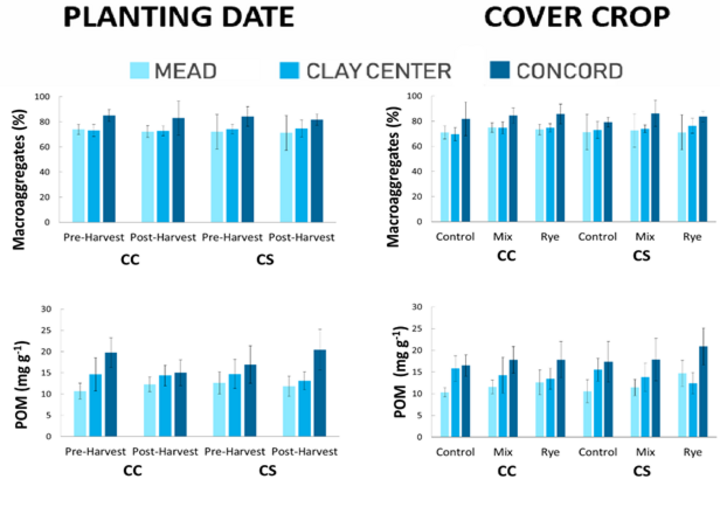
In our experiments (Figure 5), we found that while cover crop planting date and type had no effect on SOC, the rye cover crop and cover crop mix increased the percentage of macroaggregates by about 4.1% at the Mead and Concord sites and by 5.1% at the Clay Center site compared to the control. Macroaggregates, defined as soil aggregates larger than 0.25 mm or about 1/100 of an inch, have a role in the storage of carbon in soil. Greater aggregation correlates well with reduced turnover time of carbon in soil. At the Mead and Concord sites, cover crops increased total particulate organic matter (POM), the labile or easy to degrade organic matter, by 14% compared to the control. Planting date had minimal effects on aggregation and particulate organic matter concentration.
Conclusions
Our four-year study suggests that cover crops can promote soil aggregation and therefore can improve the ability of soils to store carbon. The increase in particulate organic matter at the rainfed sites is an indication that cover crops have the potential to sequester carbon. Overall, based on our results and those of other studies, cover crops may significantly improve soil aggregation and particulate organic matter concentration in the short-term, which suggests the potential of cover crops to store soil carbon in the long term (more than four years).
Support
This project was made possible by the USDA NIFA Agriculture and Food Research Initiative: Education and Literacy Initiative–Undergraduate Experiential Learning Fellowship Program and by the University of Nebraska-Lincoln Department of Agronomy.
References
Feng, W., A.F. Plante, and J. Six. 2011. Improving estimates of maximal organic carbon stabilization by fine soil particles. Biogeochemistry 112(1-3): 81–93.Kell, D.B. 2011. Breeding crop plants with deep roots: their role in sustainable carbon, nutrient and water sequestration. Annals of Botany 108(3): 407–418.
Lal, R. 2008. Carbon sequestration. Philosophical Transactions of the Royal Society B: Biological Sciences 363(1492): 815–830.
Melillo, J.M., S.D. Frey, K.M. Deangelis, W.J. Werner, M.J. Bernard, F.P. Bowles, G. Pold, M.A. Knorr, and A.S. Grandy. 2017. Long-term pattern and magnitude of soil carbon feedback to the climate system in a warming world. Science 358(6359): 101–105.
Poeplau, C., and A. Don. 2014. Carbon sequestration in agricultural soils via cultivation of cover crops – A meta-analysis. Agriculture, Ecosystems and Environment 200: 33–41.
Ruis, S.J., and H. Blanco-Canqui. 2017. Cover Crops Could Offset Crop Residue Removal Effects on Soil Carbon and Other Properties: A Review. Agronomy Journal 109(5): 1785.
Zomer, R.J., D.A. Bossio, R. Sommer, and L.V. Verchot. 2017. Global Sequestration Potential of Increased Organic Carbon in Cropland Soils. Scientific Reports 7(1).
About the Author
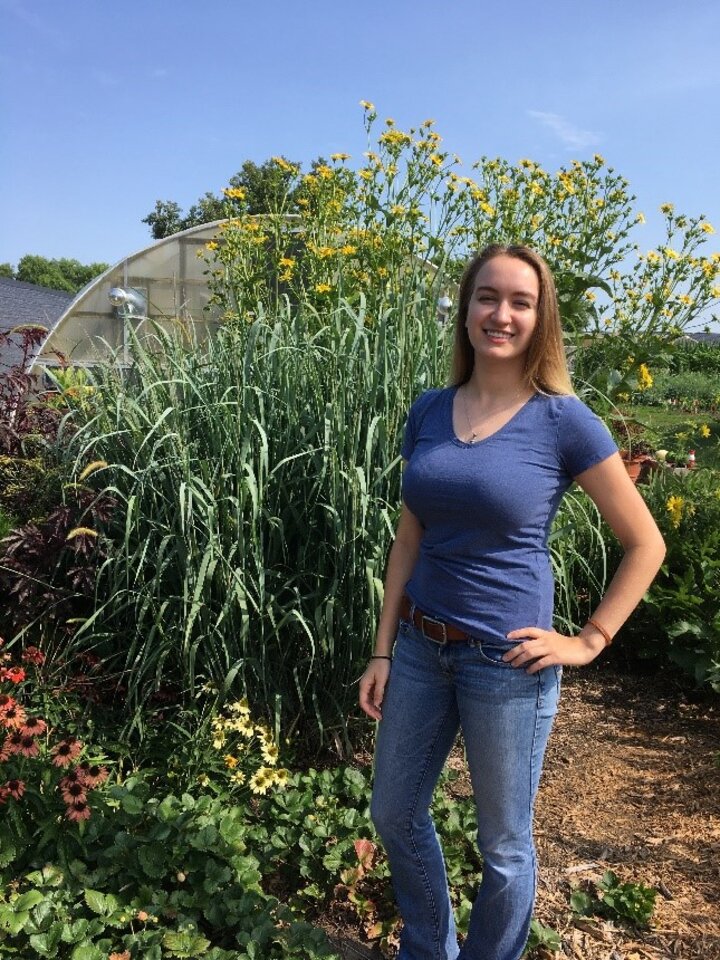
Julie McDowell was one of nine undergraduate students completing an Integrated Agronomic Systems Fellowship at the University of Nebraska-Lincoln in summer 2018.
As an environmental earth science major at Tulane University in New Orleans, Louisiana, she has dedicated herself to studying climate change in order to find meaningful, realistic solutions to benefit the global ecosystem. She will graduate in May 2019 with her Bachelor of Science degree and plans to continue on to get her master’s in atmospheric sciences.
